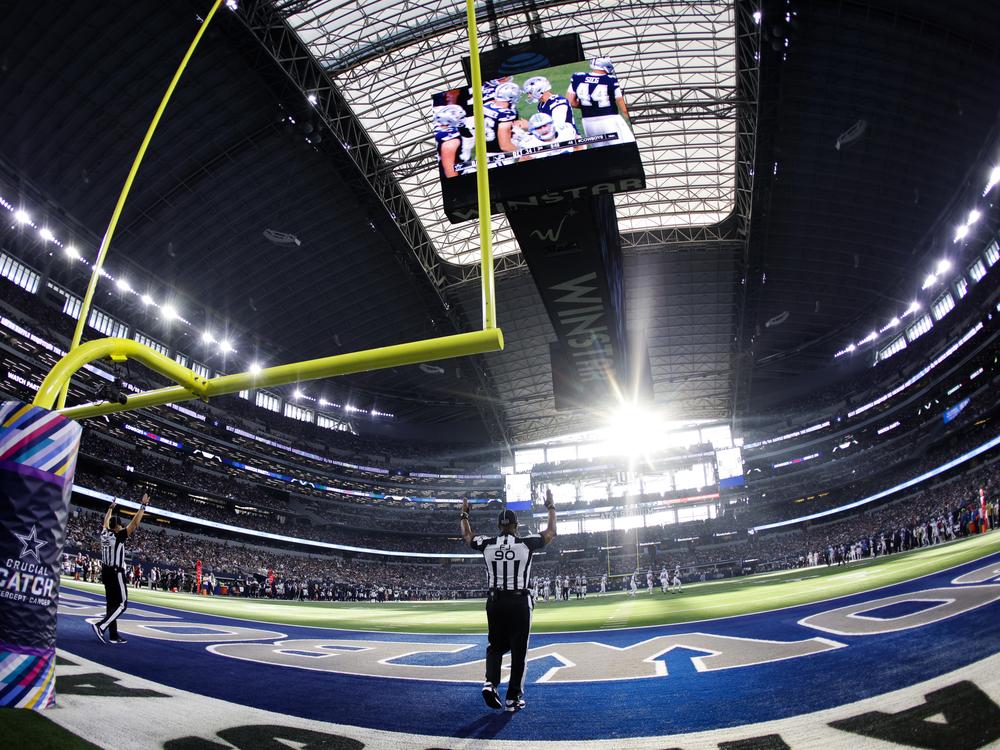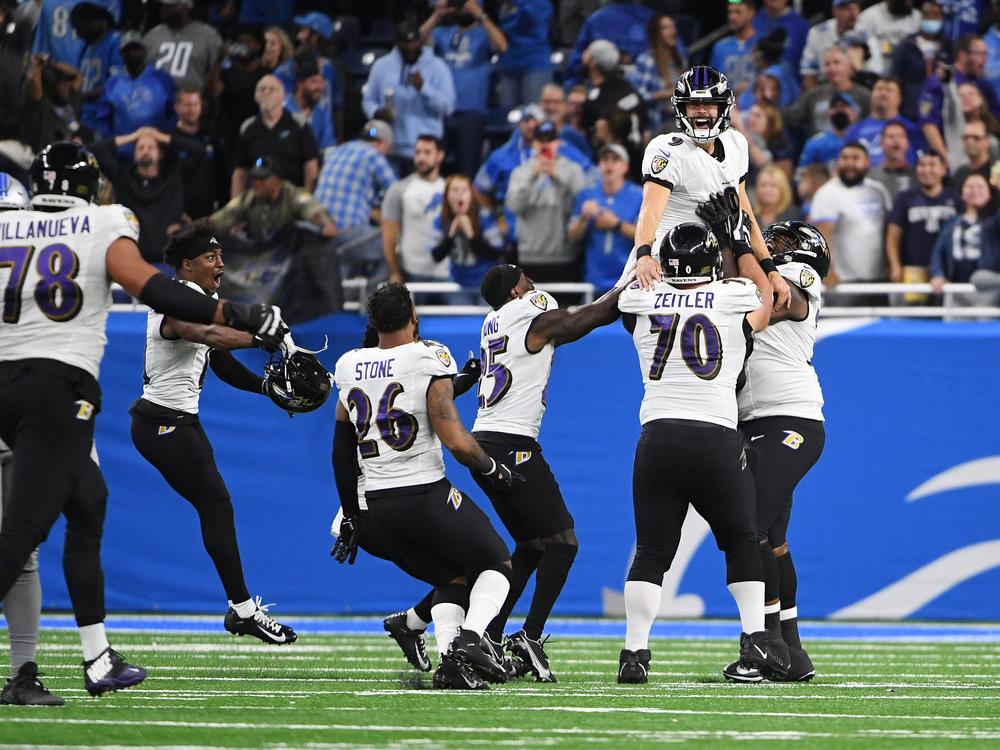Section Branding
Header Content
NFL kickers are better than ever from long distance, and that's changing football
Primary Content
In the NFL, kickers are rarely a team's big star — but this year, they are stealing the show.
This season, kickers are hitting nearly 72% of field goal attempts from at least 50 yards out. That's a record for the league — an astonishing one, given that the odds of making such field goals were worse than a coin toss as recently as 2007. As a result, head coaches are calling for long field goals far more than ever before. Last-second field goals that were once literal long shots now feel like formalities.
In all, the kicking boom represents a sea change for professional football.
"The bar has been raised," said Michael Husted, who kicked for the Tampa Bay Buccaneers from 1993 to 1998 and now works as a kicking coach.
Why kickers have gotten more accurate
One major factor, Husted said, is specialized coaching. In the early 1990s, when Husted was trying to break into the NFL, few kickers worked with kicking coaches, he said.
"I didn't have any guidance. I didn't have any instructors," Husted said. Instead, he studied the techniques of successful kickers. "I went through all their film and just broke down what the commonalities were that they all shared that made them as good as they were," he said.
In the two decades since he retired from the NFL, Husted has coached kickers of all skill levels, from high schoolers to active professional players, who send him video clips of their kicks for him to evaluate.
Better athletes are choosing to become kickers now, Husted added. Collegiate soccer, especially, has proven to be a fertile ground for NFL kickers — including Jake Bates of the Detroit Lions, Harrison Butker of the Kansas City Chiefs and Brandon Aubrey of the Dallas Cowboys, who was drafted by a Major League Soccer team before he switched to football.
"I still think it's as difficult as it used to be. I think the kickers are just better," Aubrey told reporters earlier this year. "The coaching is better. You're paying guys more money to do it. So, at a younger age, people are starting to [kick] because they know that's a career path they can have."
Now, Aubrey is knocking on the door of the NFL record book. In September, he was one yard shy of tying the NFL record for longest field goal when he hit a 65-yarder against the Baltimore Ravens.
Head coaches had to change, too
The other key to uncorking the sudden boom in long field goals wasn't the kickers at all — it was the head coaches, said kicking coach Dan Orner.
"Ten years ago, guys were hitting 60-yarders in practice," he said. "I think the coaches weren't confident enough."
Orner's clients include dozens of NCAA Division I kickers, many of whom play for teams in top conferences. Statistics and analytics have transformed football at all levels, and the kickers who were once ignored by an older generation of head coaches are now prized by their younger counterparts.
"They value the kicker. They value the punter. They value a kickoff specialist," said Orner. "The younger head coaches, you see a lot of those guys going, we've got this weapon of mass destruction, might as well use it."
The result: The number of 50-plus-yard field goal attempts has taken off dramatically. In the 1990s, an attempt took place once every three games. By 2019, that had risen only to about once every two games. Since then, the pace has nearly doubled.
The league may consider rule changes
"Obviously, it's something you take note of. It changes the game. It changes strategy," said NFL executive vice president for communications Jeff Miller, when asked in October whether the league would consider a rule change to increase the difficulty of field goal kicks.
There is precedent for the NFL to change rules around kicks. In the mid-2010s, extra point attempts had grown so routine that, in 2013, kickers missed only five out of more than 1,200 attempts league-wide.
In response, team owners voted to move the kicks from the 2-yard line to the 15-yard line, making them slightly more difficult; accuracy dropped from over 99% to 94% in 2015.
One approach the league could take, says the former kicker Michael Husted, would be to narrow the goalposts, which are currently 18.5 feet apart. At the 2015 Pro Bowl, the league experimented with a 14-foot gap.
"Eventually, they'll probably just have to have a pole back there with a cowbell and you'll have to hit that, at the rate these guys are going," he joked.
A long record with a short life expectancy
Until then, the NFL's longest-ever field goal might be the football record with the shortest life expectancy. That mark is 66 yards, set in 2021 by Baltimore's Justin Tucker, whose kick bounced off the crossbar and through the uprights to clinch a win against the Lions.
"Any time a guy's trying to make a kick from the opposite side of the logo, everything's got to be just right," he told NPR earlier this month. "The snap's got to be there. The hold's got to be there. The ball's got to be right. The conditions have got to be right."
The season isn't over yet. But field goal kicks are more difficult in the winter. The football doesn't travel as far in the cold, and wind is more of a challenge, too. In other words, Tucker's record may yet live to see one more year before it falls.
Tucker, who turns 35 this week, has had a difficult season. He started the year as the league's all-time leader in career field goal percentage, but he has missed enough kicks to fall into the No. 2 spot.
Still, he hopes he's still playing when the record falls, he said. "If and when it does, then I hope I get another opportunity to reset it," he added.
Bottom Content


